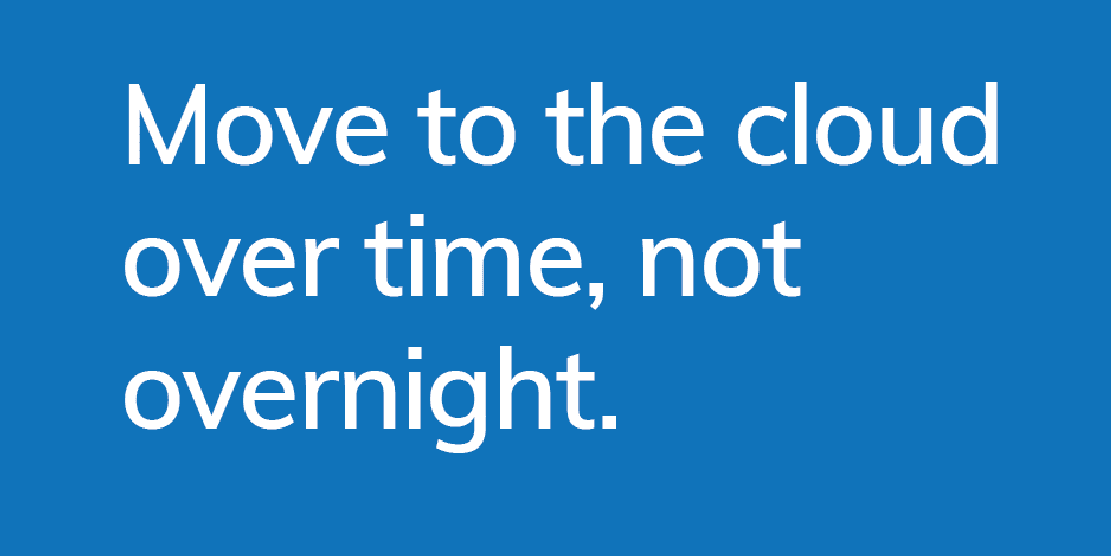Move to the cloud over time, not overnight
A blog post by Veritec.

07
August
2018
07 August, 2018
When faced with the mandate to move to the cloud, what is your agency’s response? Do you rush in head-first? Or do you hang back as long as possible?
Both approaches have their risks.
What’s key is a considered cloud migration strategy: choosing when and how you move.
Earlier in 2018, the Digital Transformation Agency (DTA’s) cloud strategy laid out a vision for transforming government services to become more modern and flexible. The DTA is now actively working with agencies to migrate them to the cloud.
Here’s what we’ve learned from our experience helping organisations chart their transition.
Risks of rushing
There are many risks of rushing migration, but two that we see particularly often are:
- change resistance and fear
- identity management
1. Change resistance and fear
There’ll always be resistance to change, but even more so if ingrained habits are challenged, including staff’s professional attachment to existing infrastructure. You may encounter rusted-on cloud sceptics. If staff or service providers feel pressured to make changes that appear to challenge their status, they may dig their heels in: your Cloud teams will face reluctant compliance rather than willing collaboration.
There is still a lot of fear and misinformation about what Cloud is and how secure it is. In a lot of respects the Cloud is now more secure than a lot of organisations on-premise services. That locked room in the basement, you know the one, the only one that still contains asbestos because you cannot move the server racks for fear that they wont turn back on again. The Cloud can help mitigate those risks and single points of failure, and help you bring your building up to code. Security, compliance, and best practice concepts are no different to your on-premise infrastructure than they are in the cloud.
There is a perception that just because you can touch and see your servers in a rack and you’re sitting behind a firewall that you are more secure than being in the cloud: think again. Correctly configured (and this goes for on-premise too) your Cloud Infrastructure can be as, if not more, secure than your on-premises.
2. Identity management
How do you currently manage access rights? We see many organisations with ad hoc identity management. Staff members have multiple profiles scattered across systems. And when they leave the organisation, their accounts are left active, raising risks of a breach. Some agencies underestimate the complexity of solving identity management. This is more than just managing basic authentication and whether a user can logon to their device. It’s a matter of managing individuals’ ICT identity across the enterprise. How do rights and privileges travel with the individual? And how will your agency detach those rights and privileges when the individual leaves?
This work will need to be properly scoped and managed and you should take the entire identity lifecycle into consideration (it’s not just a HR process): systematizing identity management, then translating that into your cloud environment.
Risks of delaying
There is one overarching risk with delaying the move to the cloud and that is not delivering the services that citizens expect.
In their private lives, citizens interact with businesses when and where they choose. They create digital identities. Businesses use this information to streamline the interaction and tailor the experience.
With business, the interactions are seamless and instantaneous. With government, interactions can be laborious, full of paper processes, with service points giving inconsistent advice.
Increasingly, government agencies face competition. We see an emerging market of private sector providers who fill the gaps left by government. An agency has a convoluted application process. So a provider makes the application on the citizen’s behalf — and charges a premium.
The risk to government is losing relevance. Losing an opportunity to engage citizens.
Technologies enable government to meet those emerging needs by being more responsive. Every agency’s cloud migration will be different. Cloud allows you to start small, migrate one piece of infrastructure, and move forward at your own pace. Setting that pace, and charting the next steps — that’s where an experienced guide can help. It is easier than you think.
Seeking experience advice on mapping your cloud transition? Talk to us.
